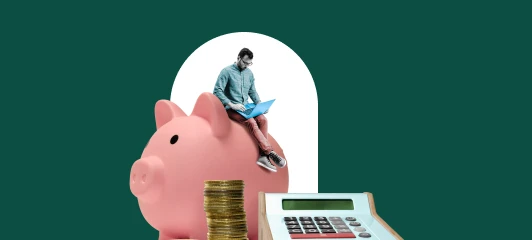Value.able: JB Hi-Fi
PORTFOLIO POINT: The latest iPhone won't ignite the share price, but JB Hi-Fi is back in the buy zone.
When new information comes to hand, it’s essential to review your stock selections. The review process should be a constant one and it’s a task made more difficult (or expensive) when the portfolio has too many individual holdings.
Fortunately, the Value.able portfolio doesn’t suffer from any such limitations. With that in mind, a number of events are worth discussing with respect to the portfolio’s position in JB Hi-Fi (JBH).
The ASX’s recent 9% bounce over four trading days has not been mimicked by JB Hi-Fi which has been treading water. JB Hi-Fi’s branding and marketing says “Cheapest Prices Always” but one doesn’t expect they are referring to share prices!
The release of the iPhone 4S seemed to underwhelm technology reviewers when launched and a portion of the population do take their purchasing cues from such quarters.
The 4S is apparently an evolution in the iPhone series, rather than a revolution, and as such, fewer users of the most recent release – the iPhone 4 – will upgrade. Instead, it is likely that they will wait until the iPhone 5 is released next year (owners of the previous model the iPhone 3GS, however, should be coming off their two-year contracts about now and are expected to upgrade). We’ll come back to that shortly.
The iPhone doesn’t contribute anything like a majority profit to JB Hi-Fi’s bottom line. This is because margins on Apple products are slim. But the iPhone does generate foot traffic and phone upgraders also buy protective covers and other accessories on which JB Hi-Fi makes much more significant margins.
So why do we care so much about the iPhone?

It’s because when JB Hi-Fi announced its full-year results the company forecast more than $3 billion in sales and management cited growth from computing, telco, and accessories. They said:
“While we anticipate the market to remain challenging, our diversified product portfolio, particularly the categories of computers, telco and accessories, from which we expect strong growth, will assist JB Hi-Fi in delivering another year of solid sales and earnings in FY12. Assuming trading conditions are comparable with FY11, we expect sales in FY12 to be circa $3.2b, an 8% increase on prior year.”
It’s the lower “telco and accessories” sales that are expected to stem from the iPhone 4S underwhelming so-called early adopters and its most ardent fans that may put pressure on that sales forecast.
As an aside, it’s worth noting that management said their sales forecast was also based on an expectation that difficult trading conditions would continue. Indeed their announced revenue target “assuming trading conditions are comparable with FY11” was made in the knowledge that July sales growth was 6.4% and same-store sales growth was negative 3.3%.
The currently assumption is that the impact of a weak retail environment will be offset by the impact of 16 new stores.
We can add to management’s conservative stance and suggest that sales and earnings will also benefit from the maturity of younger (but not new) stores. Given the share buyback, it’s worth considering overall sales and earnings rather than earnings per share.
Back to the weak likely numbers from iPhone upgraders: all is not lost and it’s not time to throw in the towel.
The expected release of the iPhone 5 next year – Apple will be motivated to fast-track the next edition to prevent competitors from winning more market share – may reignite iPhone fever and JB Hi-Fi will be the preferred source for buyers looking to buy the phones outright (notwithstanding Apple ceasing sales through third party resellers).
Despite the difficult retail trading conditions, the prospects are far brighter for JBH’s growth and market share outlooks than they are for David Jones (DJS), Myer (MYR), Harvey Norman (HVN) or Pacific Brands (PBG), and yet these competitors all saw there share prices rise materially in recent days.
The bigger issue for JB Hi-Fi in meeting its full-year target is the quiet retreat by its telco partner Telstra from the aggressive deals it had been offering to win millions of new mobile acolytes from Optus, 3, and in particular, Vodafone.
Back on February 10 last year I wrote of the maturing nature of JB Hi-Fi’s business in a country that is as small as ours that is acknowledged by the management team and its subsequent impact on intrinsic value.
“It happens eventually to all retailers and it will happen to JB Hi-Fi in the next five to seven years. The best you can hope for is that once the stores have saturated the market, directors stick to their knitting, and the company continues to generate high returns but pays out all of those earnings out as a dividend (becoming like a bond) rather than make some grand attempt to buy something offshore or diversify too far away from their core expertise (often at the behest of some institutional shareholder) and blow up the returns.”
Until then, there is solid growth and category dominance to achieve and I currently believe it will do both. The visible maturing of the business has, however, resulted in a de-rating – jargon for “the hot air has come out of the story”.
In addition to trading at a discount to my estimate of intrinsic value, JB Hi-Fi now trades at a discount to the Industrial index – where previously it had been at a premium. It does still trade at a well-deserved premium to its peers, however.
Taking into account today’s closing share price of $14.36, I estimate JB Hi-Fi’s intrinsic value for 2012 to be about $17 now and rising to $21–24 in 2013-14.
These are 25% lower than estimates of a year ago and are a function of the lower earnings growth expectations and lower equity as a result of the buyback. Just keep in mind my comments from more than a year ago about maturity of retail concepts.
![]() Roger Montgomery is an analyst at Montgomery Investment Management and author of Value.able, available exclusively at rogermontgomery.com.
Roger Montgomery is an analyst at Montgomery Investment Management and author of Value.able, available exclusively at rogermontgomery.com.
















